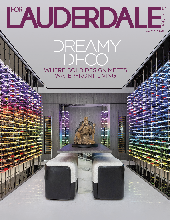
When you are building a small city with businesses, banks, a hotel, etc., it’s a good idea to have a fire department. Unfortunately, nobody told that to our early city fathers.
So on June 1 and June 2 in the year 1912, when most of the business district burned to the ground, there was nothing to do but watch in horror.
According to Stuart McIver, writing in the Sun-Sentinel, “The fire totally wiped out the Wheeler and Stranahan stores, Everglades Grocery, Fort Lauderdale Pharmacy, the Fort Lauderdale Herald, Pioneer Realty, Gutchen’s Bakery, Jeffries Meat Market, Oliver Brothers Dry Goods Store, A.E. Johnson’s Jewelry, Wheeler garage, the post office and Snyder & Hortt.”
Two buildings were left standing. The Fort Lauderdale State Bank was saved by a poor man’s fire truck: a bucket brigade ferrying sloshing pails of water from the New River. The Osceola Hotel was saved by strategically placed dynamite, set to prevent the fire’s spread.
Soon after, the town council voted unanimously to establish Fort Lauderdale’s first volunteer fire department. According to the fire department’s history, the city’s first “fire truck” was a chemical extinguisher mounted on carriage wheels, with a hand-operated pump.
While the town had its “sanitation mule,” it never had a horse-drawn carriage for fires. The extinguisher on wheels was towed to blazes by an International Harvester truck.
But the pump was forced to be transported by human power. As crazy as it seems, the pump, along with 500 feet of hose, was pulled to the scene by the firefighters.
Unfortunately, this arrangement was not always successful on the city’s outskirts, because some roads were inadequate.
The city’s first fire station also came quickly. It was constructed in 1913 on Andrews Avenue and SW Second Street, part of the City Hall complex. It was about time: before that, the fire equipment was stored in a private citizen’s warehouse.
A year after the Osceola Hotel was saved by dynamite, it once again caught on fire. This time, it burned to the ground. And the city at last bought a “fire truck” – a used car.

In 1914, Dr. R. S. Lowry was appointed fire chief and promptly divided the town into four districts. Obviously, they didn’t have GPS or cell phones to guide firefighters to the scene in those days. What they did have was whistles. Each district had a unique sound for the firefighters to be dispatched. Could you imagine that today? “Keep your sounds straight, fellas.” Roger that.
It was 1917 that the first paid fire chief was hired. He most likely made it a condition of his hiring that he could replace that old used car (accounts don’t mention the make) with the real thing. So the new chief went out and purchased an “American LaFrance” fire engine. (The U.S. company began building hand-drawn and horse-drawn vehicles in 1832, before advancing to steam-driven engines.)
Going back to the big fire, McIver’s account had this surprising anecdote, which tells you something about our spirit. Just the day before the fire, real estate partners W.B. Snyder and M.A. Hortt opened a brand new office building. To mark the occasion, they asked their bookkeeper to take their picture standing on the front steps of the building.
The next day, all that remained were the concrete front steps.
Hortt wrote later: “About midnight that night I was awakened by a bright glare shining in my bedroom window. When I looked out, I could see that the whole business district of Fort Lauderdale was in flames.” He rushed down to rescue some of the contents of the new office, “but it was too late.”
The next day, the two partners summoned their bookkeeper again to the front steps. And “with an almost debonair sense of humor,” writes McIver, they asked him to snap the picture again.












1 comment
My Grandpa, Clyde B. Stevens, was the son of Jesse Stevens who was part owner of PIONEER REALTY along with M.A. Marshall in Ft. Lauderdale at the time of the fire & is one of the buildings mentioned in the article that was destroyed by the fire. I have a “Post Card” photo of their “temporary” office after the fire of June 1 & 2, 2012. My Grandpa, who would’ve been around 22 yrs. old is seated on the porch of this structure with his father & M.A. Marshall. I’d love to know the street this was on. I’m unable to affix the post card photo to this site.